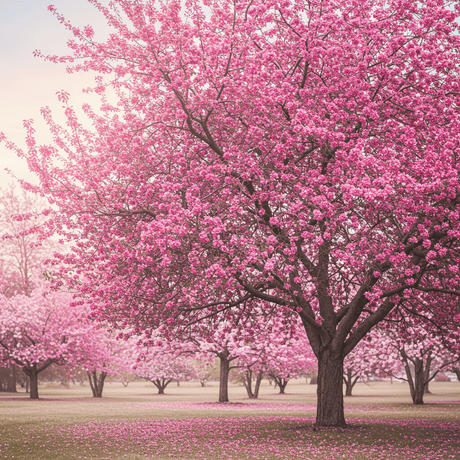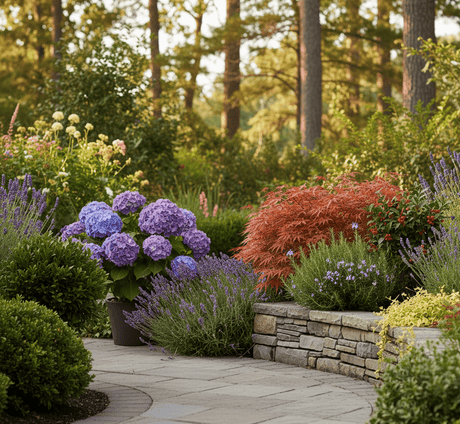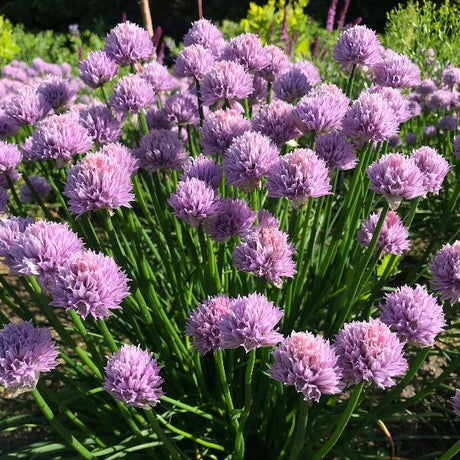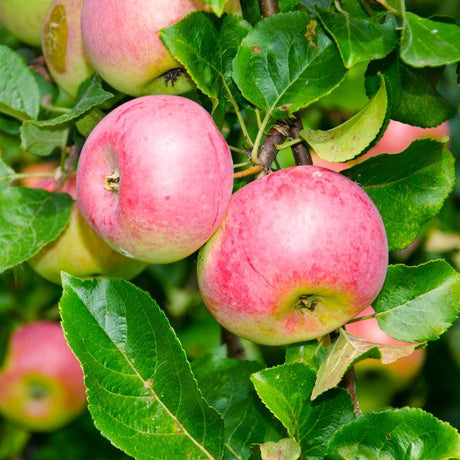Urban Apples® Golden Treat™ Columnar Apple
Malus x 'UEB 3358-3'
Urban Apples® Golden Treat™ Columnar Apple is backordered and will ship as soon as it is back in stock.
- Stay Protected with Plant Sentry ™
Plant Sentry™
Plant Sentry™

Plant Sentry™ Protected
Your order is protected by our compliance system that:
- Prevents restricted plants from shipping to your state
- Ensures plants meet your state's agricultural requirements
- Protects gardens from invasive pests and diseases
Delivery and Shipping
Delivery and Shipping
Delivery and Shipping
Fast, Safe Plant Delivery
Ships in 3-4 business days • Tracking provided • Weather protected
| Under $50 | $9.99 |
| $50 - $99.99 | $14.99 |
| $100 - $149.99 | $16.99 |
| $150 - $198.99 | $24.99 |
| $199+ | FREE |
✓ Zone-specific timing • ✓ Professional packaging • ✓ Health guarantee
Understanding Plant Options
Nature Hills offers plants in two main formats:
- Container Plants: Grown in pots with soil, sized by container volume and plant age
- Bare Root Plants: Dormant plants without soil, sized by height measurements
Container Plant Sizes
Container sizes indicate plant age and growing capacity rather than liquid volume equivalents. Our containers follow industry-standard nursery "trade gallon" specifications, which differ from standard liquid gallon measurements.
Young Plants (6 months to 18 months old)
| Container Size | Actual Volume | Metric Equivalent |
|---|---|---|
| 2" x 2" x 3" | 0.18 - 0.21 dry quarts | 0.20 - 0.23 dry liters |
| 4" Container | 0.31 - 0.87 dry quarts | 0.35 - 0.96 dry liters |
| 4.5" Container | 0.65 dry quarts | 0.72 dry liters |
| 6" Container | 1.4 dry quarts | 1.59 dry liters |
| 1 Quart | 1 dry quart | 1.1 dry liters |
| 5.5" Container | 1.89 dry quarts | 2.08 dry liters |
Established Plants (18 months to 2.5 years old)
| Container Size | Actual Volume | Metric Equivalent |
|---|---|---|
| 2 Quart | 2 dry quarts | 2.2 dry liters |
| #1 Container | 2.26 - 3.73 dry quarts | 2.49 - 4.11 dry liters |
| 5" x 5" x 12" | 3.5 - 4.3 dry quarts | 3.85 - 4.74 dry liters |
Mature Plants (2-4 years old)
| Container Size | Actual Volume | Metric Equivalent |
|---|---|---|
| #2 Container | 1.19 - 1.76 dry gallons | 5.24 - 7.75 dry liters |
| #3 Container | 2.15 - 2.76 dry gallons | 8.14 - 12.16 dry liters |
Large Plants (3-5 years old)
| Container Size | Actual Volume | Metric Equivalent |
|---|---|---|
| #5 Container | 2.92 - 4.62 dry gallons | 12.86 - 20.35 dry liters |
| #6 Container | 5.25 - 6.01 dry gallons | 23.12 - 26.42 dry liters |
| #7 Container | 5.98 - 6.53 dry gallons | 26.34 - 28.76 dry liters |
Bare Root Plants
Bare root plants are sold by height from the root system to the top of the plant. Plants may exceed minimum height requirements.
Common Sizes:
- Trees: 1 foot, 2 feet, 3 feet, 4 feet, 5 feet, 6 feet
- Shrubs & Perennials: 1 foot, 18 inches, 2 feet
Important Notes
Container Volume Specifications
- Trade Gallon Standard: Our containers follow industry-standard "trade gallon" specifications established by the American National Standards Institute (ANSI Z60.1) for nursery stock
- Volume Variations: Actual soil volume may vary due to plant root systems and growing medium settlement
- Age Indicators: Container size primarily indicates plant age and maturity rather than liquid volume equivalents
Growing Conditions
- Plant size can vary based on variety and growing conditions
- Container size helps indicate plant maturity and establishment level
- Larger containers generally mean more established root systems and faster landscape establishment
Seasonal Availability
- Bare root plants are available seasonally when dormant
- Container plants are available throughout the growing season
- Specific varieties may have limited availability in certain sizes
Questions?
For questions about specific plant sizes or availability, please contact our plant experts who can help you choose the right size for your landscape needs.
Plant Highlights
Urban Apples® Golden Treat™ Columnar Apple highlights at a glance!
-
Botanical Name
-
Brand
-
Growing Zones4, 5, 6, 7, 8, 9
-
Growth RateModerate
-
Mature Height
-
Mature Width
-
Leaf Color
-
Flower Color
-
Pollinator FriendlyYes
-
Pollinator Required
-
Bloom PeriodEarly Spring, Late Spring
Characteristics
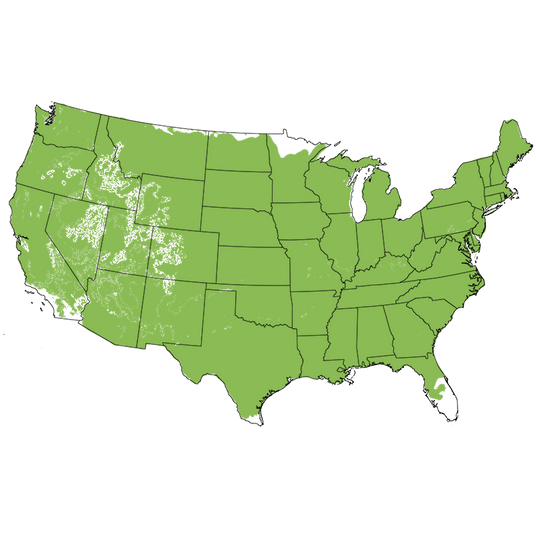
Growing Zones
Outstanding space-savers and sweet treats, the new Urban Apples® Golden Treat™ Columnar Apple Tree (Malus x 'UEB 3358-3') is a delightful addition to any landscape! These skinny trees produce a harvest of full-sized apples in only 2-3 feet of space! Golden Treat™ Columnar Apple doesn't need much time to start impressing you. These apples are precocious and start producing after one or two years!
Golden Treat™ apples are full-sized, green-gold-skinned fruit that are firm and tasty! They have a hint of tartness which sweetens up as the fruit ripens. First developed in Czech Republic, Urban Apples® have been a revolution in at-home fruit growing!
Golden Treat™ is the modern solution to having normal-sized Apples in smaller urban gardens, on balconies, and in sunny container gardens anywhere! Staying short and only 2-3 feet wide, Golden Treat™ gives huge Apple yields in a small-footprint sized space. This makes it perfect for containers and tight-squeezes.
Enjoy beautiful, fragrant Apple blossoms in the spring that the pollinators adore, followed by full-sized lightly-tart and crisp fruit that sweetens as it ripens in the fall (September), so plant these petite trees where you can enjoy the flowers and fruit easily!
Golden Treat will grow and set fruit the first year you plant it and produce higher yields year after year! Boost your family's food security and increase crop size by planting Golden Treat™ with a pollinator tree nearby. Try any of our Urban Apples® Columnar Apple Trees or you can also cross-pollinate with Dolgo Crabapple, or other white-flowering Crabapple tree.
Planting and Application:
It's hard to believe but totally true! You can grow space-saving columnar fruit in any sized garden, even on your balcony or rooftop garden as any sunny spot can now grow Columnar Apples!
Urban Apples® and their pollinators look amazing planted in matching pots around your seating areas, or in the ground anchoring a garden bed! The easy formal effect combined with the fragrant blossoms and autumn fruit will be conversation starters! Container gardeners, porch and patios in planters, or in the ground anywhere that is sunny!
You can grow these narrow Apple trees in deep containers. Just make sure the roots have plenty of room to develop and there are plenty of drainage holes. Enliven your patio or porch with their showy springtime blooms! You'll be enthralled watching your harvest develop!
Take edible landscaping to the next level with a pair of sentries standing on either side of your front door entry! Or mark the entrance to a garden path with potted or in-ground Columnar Apple Trees on either side! Line that skinny patch of ground that runs along the side of your home leading to the back yard with fruit trees. Create a striking front garden berm with Golden Treat™ acting as a unique punctuation mark among the front yard landscaping.
Plant them as a backdrop for your Victory Garden, and alternate between the whole Urban Apples® series for a beautiful fruiting hedgerow! The veggies and herbs will appreciate not being shaded out by a larger tree!
- Bright Golden-Green Fruit & Slight Blush
- Stays Columnar & Lush Foliage
- Mid Season Harvest With A Pollinator - Ripens September
- Fragrant White Spring Flowers
- Great In Containers & Small-Space Gardening
- Full-Sized Tart Multi-Purpose Apples
#ProPlantTips for Care:
Easy-to-grow, columnar Apple Trees need at least 6 hours of direct sunlight a day for optimal flowering and fruiting. Plant Apple Trees like Golden Treat™ and its pollinator tree in a well-drained location or container with good drainage and ample room for its roots. Provide these fruiting trees with regular moisture access and fertility, plus a 3-4 inch deep layer of arborist bark chips. Provide container-grown Apples with a protected winter location in colder growing regions of USDA planting zones 4 to 9. It is recommended that you stake your tree to support its straight trunk and keep container plants from toppling over in heavy winds and storms.
- Full Sun
- Well-Drained Enriched Soil
- Appreciates Mulched Beds
- Regular Moisture & Fertility
- Very Low-Maintenance - Little to No Pruning!
Grow full-sized Apples in any sunny location whether you have a yard or not with the new Urban Apples® series of Golden Treat™ Columnar Apple Trees! Now available from NatureHills.com!
Urban Apples® Columnar Apple Tree Frequently Asked Questions
When to Plant Urban Apples® Columnar Apple Trees
Planting Bareroot trees as soon as you can dig a hole in spring and until hot weather, the earlier the better. Plant container Apple trees throughout the growing season with complete success - that is the benefit of container plants - to extend the planting season. Your County Agricultural Extension Office is a great resource for first and last frost dates in your area.
How to Plant Urban Apples® Columnar Apple Trees
Dig a large hole only as deep as needed to accommodate the bareroot or container root ball, and twice as wide. Add Nature Hills Root Booster to speed root establishment. Remove the pot or bag and situate it into the hole so the top of the soil (soil line if bareroot), is level with the new location's soil being careful not to plant too deep. Water in again very well and backfill with the same soil you dug up, tamping down gently to ensure there are no air pockets.
Top off with a 3-4 inch thick layer of Arborist mulch. Consider staking your tree to keep its trunk growing straight for the first year to ensure it stands tall against strong winds and drifting snow.
Pruning Apple Trees
When to Prune Urban Apples® Columnar Apple Trees
Trim off any broken branches from delivery as soon as you take them out of the box. Prune and trim Apple trees while dormant, in late winter or early spring, before you see new growth.
How to Prune Urban Apples® Columnar Apple Trees
Your Columnar Apple shouldn't need much pruning at all! But in case you do need to give yours a trim, here's how.
Dormant prune to:
- Remove any double leaders or narrow crotch angles
- Eliminate any crossing branches
- Thin interior branching and leave the fruiting spurs and strong branches in place opening up the canopy
- Branching at least 24-36 inches above the ground
Prune Apple trees in the summer to:
- Control size and shape by reducing the length of longer new growth on vigorous trees
- Remove water sprouts on the main trunk or older branches in the crown
- Remove suckers at the base of the trunk
- Thin fruit during heavy years on established trees
How to Care for Urban Apples® Columnar Apple Trees
Growing an apple tree is easy when proper soil, good drainage, attention to moisture, and regular fertility are maintained. Once you've chosen an apple tree that works for your climate, in the size you need for your landscape, and its pollinator (if needed), then you've accomplished half the battle!
- Apple trees do best in full sun and well-drained soil
- Water your apple trees when it gets dry - especially during the fruit production stage, and drought periods to keep it stress-free
- Use arborists' wood chips to mulch over the roots of your apples
- Have your soil tested to see what your soil may be lacking before adding fertilizers
- Maintenance pruning and shaping
Apple trees will tolerate a wide range of soils, so long as water and nutrients are not limited and the pH level is adequate.
How to Fertilize Urban Apples® Columnar Apple Trees
For the first year, water alone is most important. It is always best to get a soil test to see what your soil is lacking before adding more fertilizers. Once established, a fertilizer routine may be beneficial. We do offer some excellent slow-release organic options, applied according to the package directions.
Fruit trees need more phosphate and it's possible to apply too much nitrogen which affects the soil's pH. Test soil acidity or alkalinity using a pH Tester.
Fertilize in spring when you first see new growth emerging.
- Don't overdo it
- Phosphates are your friends
- Pay attention to pH in areas with extremely high or low soil pH
- Follow the directions
Urban Apples® Columnar Apple Tree Pollination Info
In addition to a white-flowering Crabapple tree like Dolgo, Urban Apples® Columnar Apple trees are not self-fruiting and need a pollinating partner. Pair with one of these varieties:
- Urban Apples® Blushing Delight™ Columnar Apple
- Urban Apples® Tasty Red™ Columnar Apple
- Urban Apples® Tangy Green™ Columnar Apple Tree
- Urban Apples® Blushing Delight™ & Golden Treat™ Columnar Apple Trees Combo
Harvest Times for Urban Apples® Columnar Apple Trees
Urban Apples® Columnar Apple Trees are typically ready to harvest in September and considered mid-season.
Early-Season? Mid-Season? Late-Season? The terminology can be confusing for new Apple Tree growers. Weather, climate and your tree can also determine when it's ripe.
For Apples:
- Early-season is usually June-July
- Mid-season can be August-September
- Late-season can be from late September-November
The growing season consists of spring, summer, and fall, and varies with climate and weather. Areas with longer growing seasons in the warmer hardiness zones can greatly affect the harvest times for each particular apple variety grown in your area.

